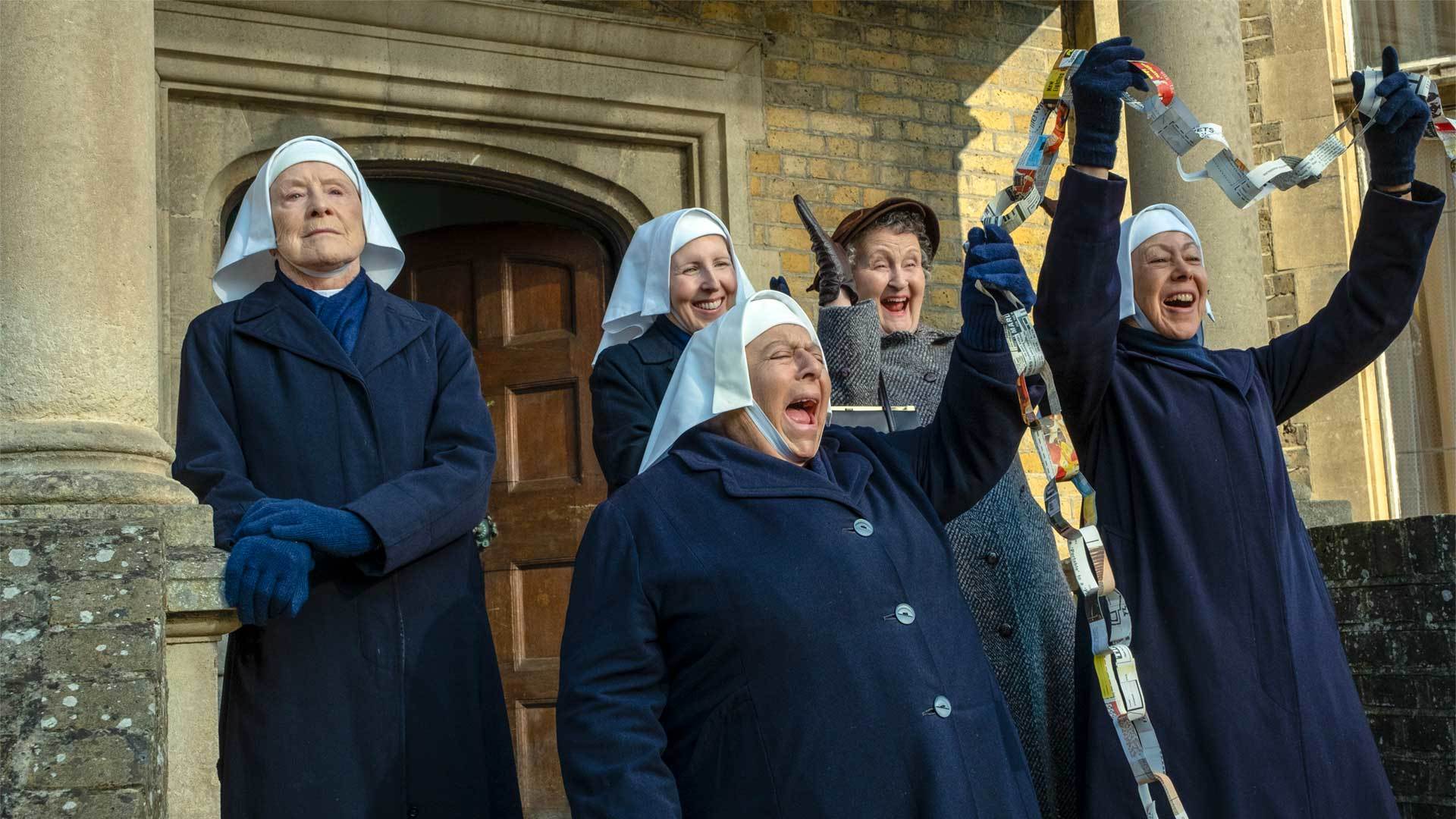
Whether you ended your Christmas day by settling down with a warm beverage to watch the Call The Midwife Christmas Special or recorded it to watch later, if you are reading this now, the midwives of Nonnatus house are likely an established part of your holiday traditions. The show can be counted on to provide a feel good experience and uplifting message. This 9th yearly Christmas Special did not disappoint. When all hope is lost watch the midwives.
As Nurse Lucille Anderson peels potatoes with her despondent colleagues, Trixie and Valerie, she discusses her attitude and approach to racist comments directed at her. She talks about how all islands are the same. Each island has unalterable boundaries within which the residents live. Beyond geography, boundaries of traditions, religious practice, attitudes and prejudices can make some residents feel secure and imprison others. She points out that some cannot leave these boundaries but some cannot abide them. We are all living on our own little islands. It is easy to feel disconnected, threatened and alone in isolation. To remedy this, we must venture into other islands or allow them to enter ours.
As Dr. Turner and the Midwives left East London to connect with the people in the Hebrides, they quickly crossed into the island boundaries. Passing barriers, from roaming sheep to bristling matriarchs, they found links and bonds. Links of caring, love, family, heritage, religious practice and personal pain were shared and connected to become a chain. Midwifery is glue for so many of the human links which connect us. Coming together to help others, whether as dramatic as saving a life or as simple as making a paper chain binds us in common purpose and love. A simple paper chain becomes a strong and effective analogy for the universal theme of Call the Midwife. Connecting is such a big part of Midwifery.
Midwives across the globe have traditionally provided health care for isolated communities connecting them with resources. Long before the era of Call the Midwife, wise women have stepped up to help when and where no one else is available. The first Nurse-Midwifery School in the United States was established in the Appalachian mountains of Kentucky for this purpose. To this very day midwives still feel the call to provide for underserved populations. The December 22, 2019 issue of the New Yorker featured a story of United States nurse-midwife, Sunday Smith. She serves isolated underserved communities in upper state New York. Her story reads like a television drama and perfectly illustrates the contrasts between health care and midwifery in the United States and other developed countries. I encourage you to check it out.
As we enter the New Year, it is important to note that the World Health Organization has designated 2020 as the International Year of the Nurse and Midwife. It is significant as the 100-year anniversary of the birth of Florence Nightingale, a founder of modern nursing. The American College of Nurse-Midwives refers interested people to this statement regarding the designation.
Touching on my interest, beyond the midwifery theme is the exploration of Scottish culture in this episode. My surname, McBain, is derivative of a highland clan displaced to North America a couple centuries ago. Although no longer closely bound to the traditions of my Scottish ancestors, I remain attracted to the history and culture. I was captivated by the brief depiction of “wauking the tweed”. This ancient Scottish Highland tradition of manually working wet woolen cloth to lightly felt it, developed to make the cloth warmer and more moisture resistant. A specifically female activity, ancient songs and rituals still accompany this practice.
The mystical White Stag of the Scottish Highlands evokes a multitude of religious and folkloric beliefs. As Sister Monica Joan sees an embodiment of Christ in the White Stag, his appearance is also believed to be a portent of change for those who encounter him. Is this a foreshadowing for Sister‘s future? It takes no mystic to foresee change. But we will have to await Season 9 for particulars. It will be a long winter until the new season airs on PBS, March 29, 2020.
As the Scottish bard, Robert Burns would say, as translated from Scots Gaelic: Here’s my hand, my trusty friend and give me your hand too. And we will take an excellent goodwill drink for the days of long ago (ie. Auld Lang Syne). Wishing all a world record-breaking chain of love in 2020 and beyond. Here is further musical inspiration.
Don’t let the chain of love end with you.